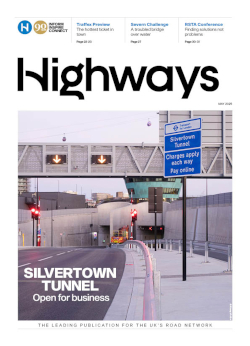National Highways’ first-ever 3D-printed concrete headwall is being trialled as part of the huge A30 Chiverton to Carland Cross scheme in Cornwall.
The 2.3-tonne curved headwall was constructed using an alkali-activated cementitious material and a 3D printer and installed last month by Costain on one of the 8.7-mile dualling project’s 33 multi-species under-road wildlife crossings.
National Highways said that while headwall structures are traditionally made from precast concrete, utilising extensive steel reinforcement and limited in their shape, the 3D-printed headwall requires no steelwork.

The innovation project is part of the Digital Roads of the Future Partnership, a collaboration led by Costain with partner company Versarien, the University of Cambridge and National Highways.
The first trial headwall was printed at Versarien’s Gloucestershire operations centre in December.
During the printing process a number of sensors were embedded into the structure by Cambridge University researchers to provide temperature and movement data.
A headwall was chosen for the trial because of the ease of access for installation and monitoring without affecting the operational road; real-world data will be gathered by PhD students alongside post-doctoral researchers from Cambridge University.
This will provide a better understanding of the technology, materials characteristics and performance over time to support future uses and understand its wider application within the construction industry.
The geometric shape of the product has been designed using curves instead of straight lines, and without the requirement of extensive steel reinforcement, representing a significant and sustainable saving in costs and material, National Highways said.
Its roads development director, Joanna White, said: 'We’re committed to exploring sustainable and innovative ways of constructing and maintaining our roads and this marks a significant first step as part of the work carried out by the Roads Research Alliance.’
Bhavika Ramrakhyani, head of materials at Costain said: ‘These trials have assisted towards undertaking further research and development towards the use of 3D concrete printing within the infrastructure industry as we need to understand the behaviour of the material and technology in real-life situations to be used for future infrastructure implementation.
‘This provides a step change in the construction industry that there is no ‘one size fits all’, but different solutions are needed to combat climate change and increase productivity in parallel.’
Headwalls are retaining walls built at the inlet or outlet of drainage or culvert pipes, and are installed to reduce any erosion to the pipe and surrounding area caused by water flows.





